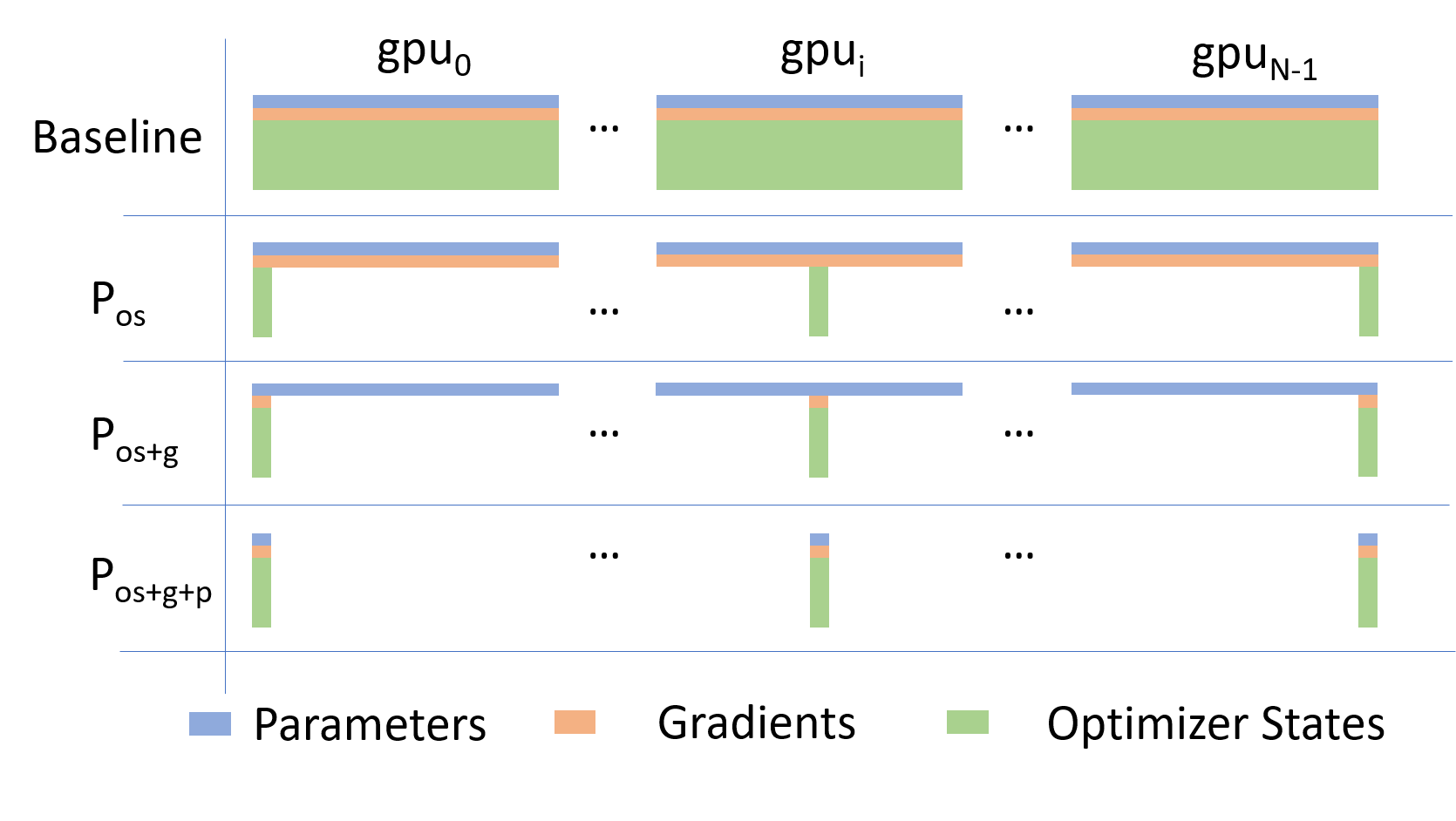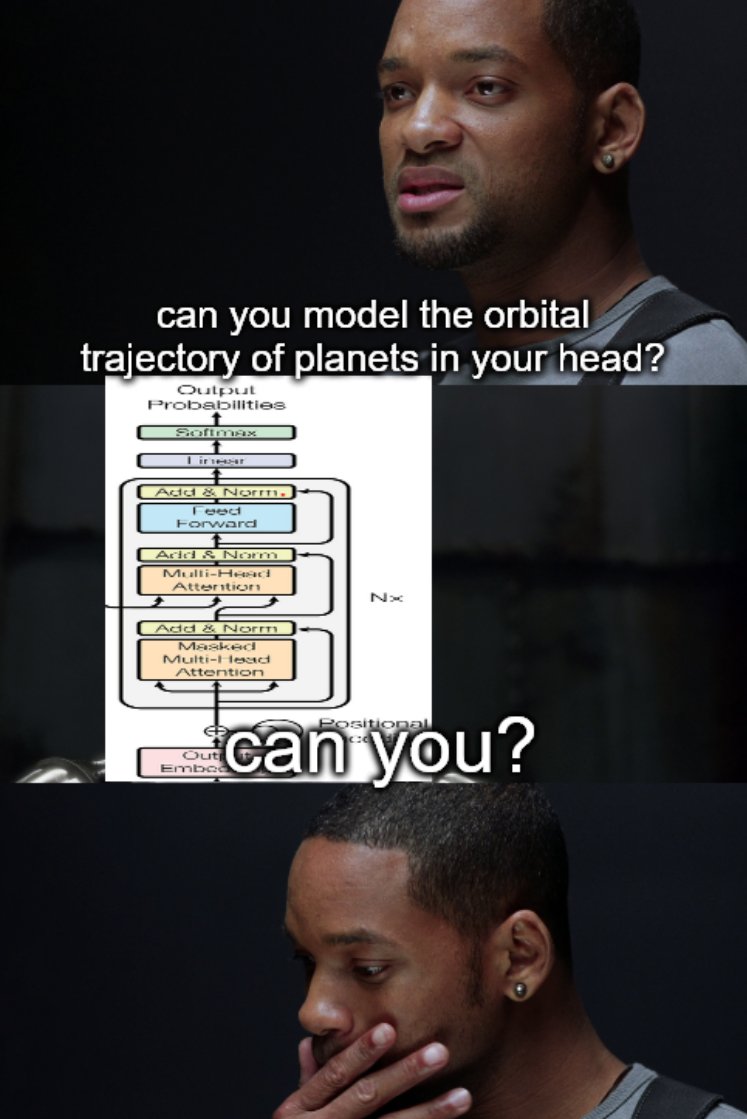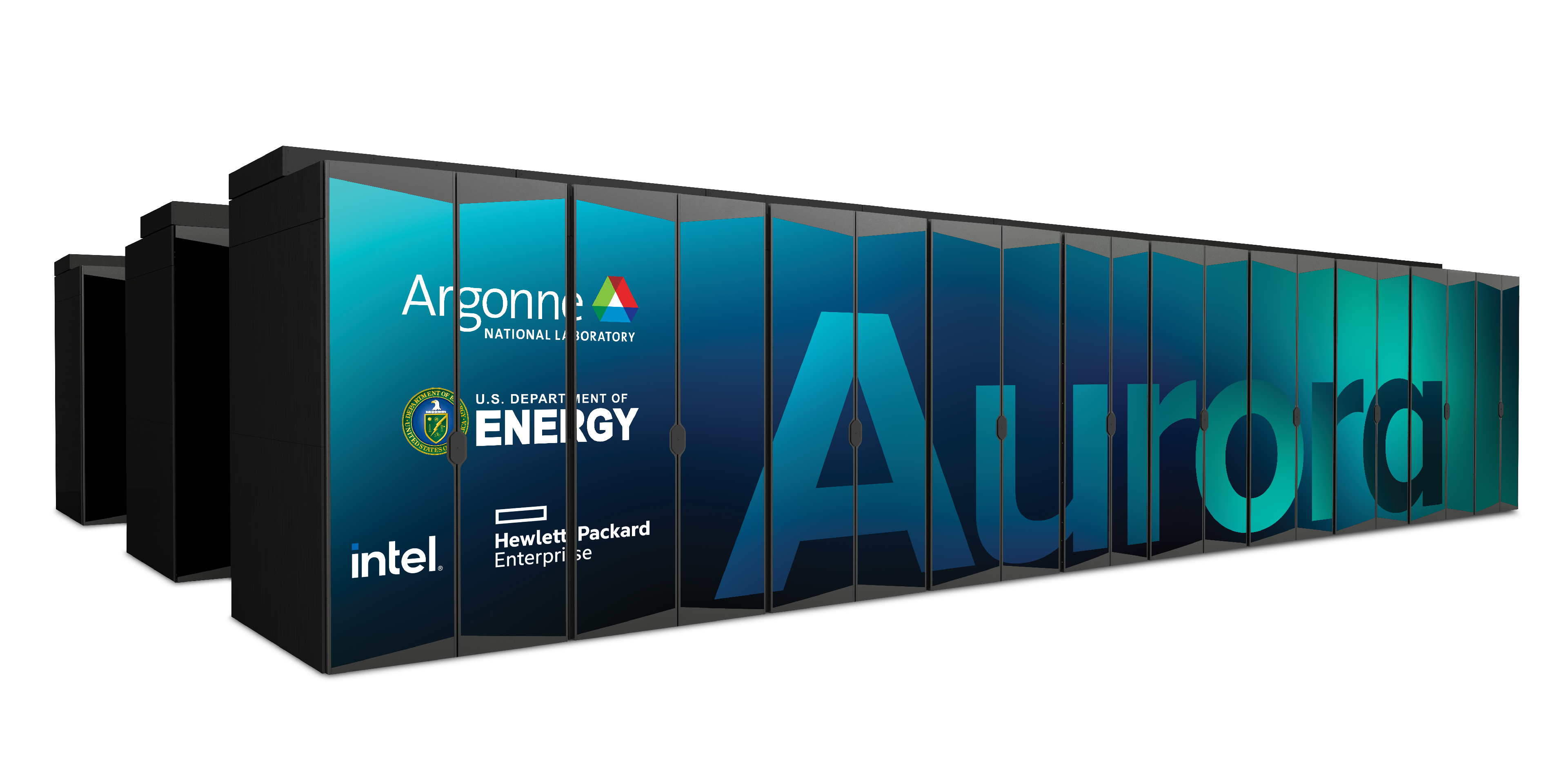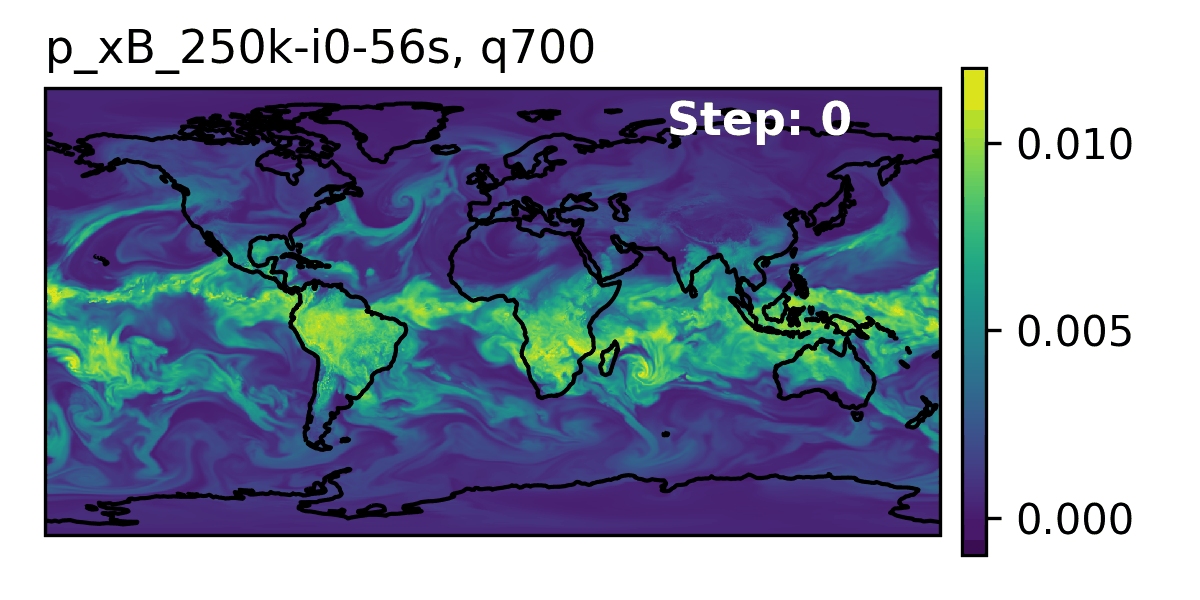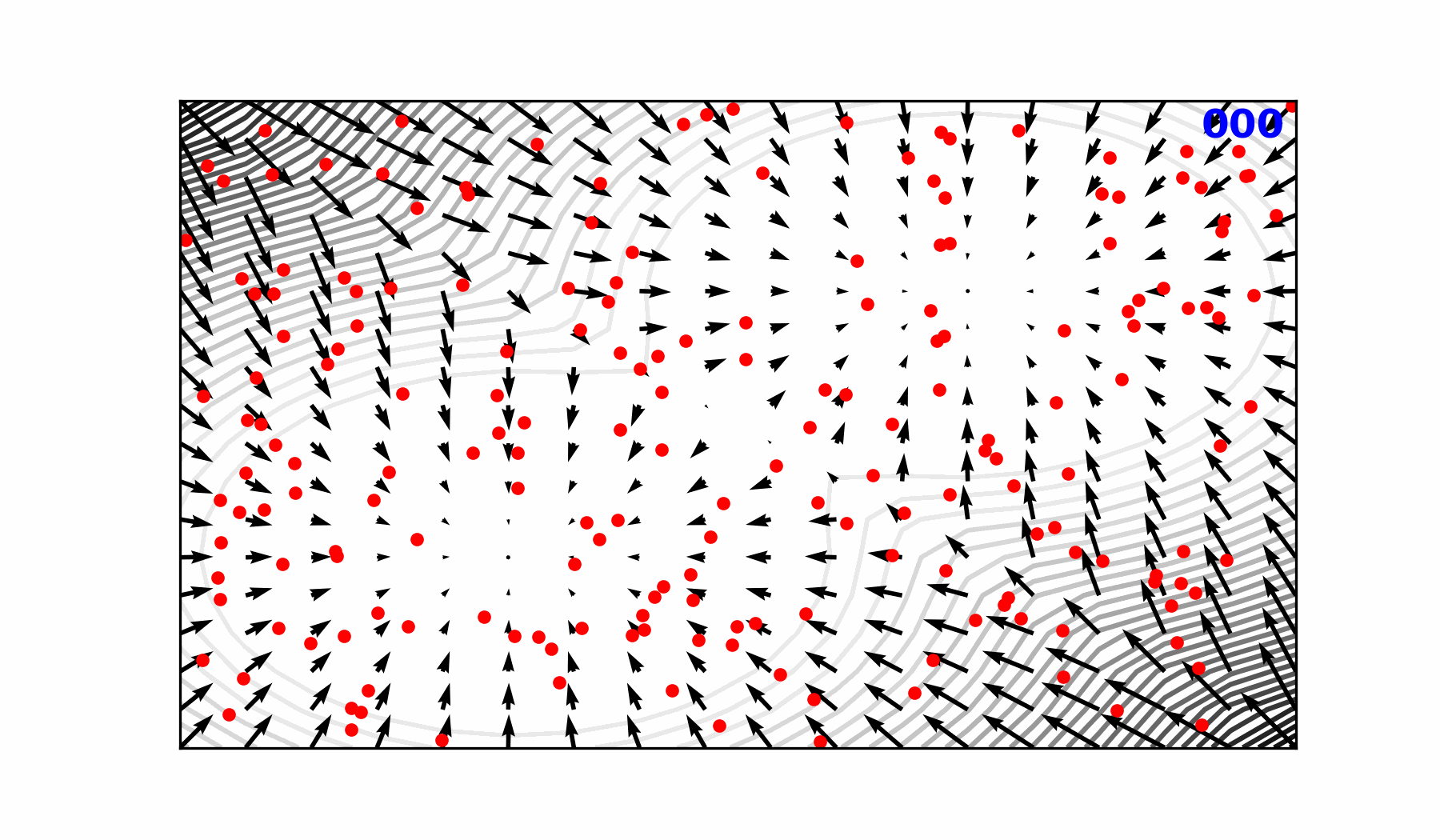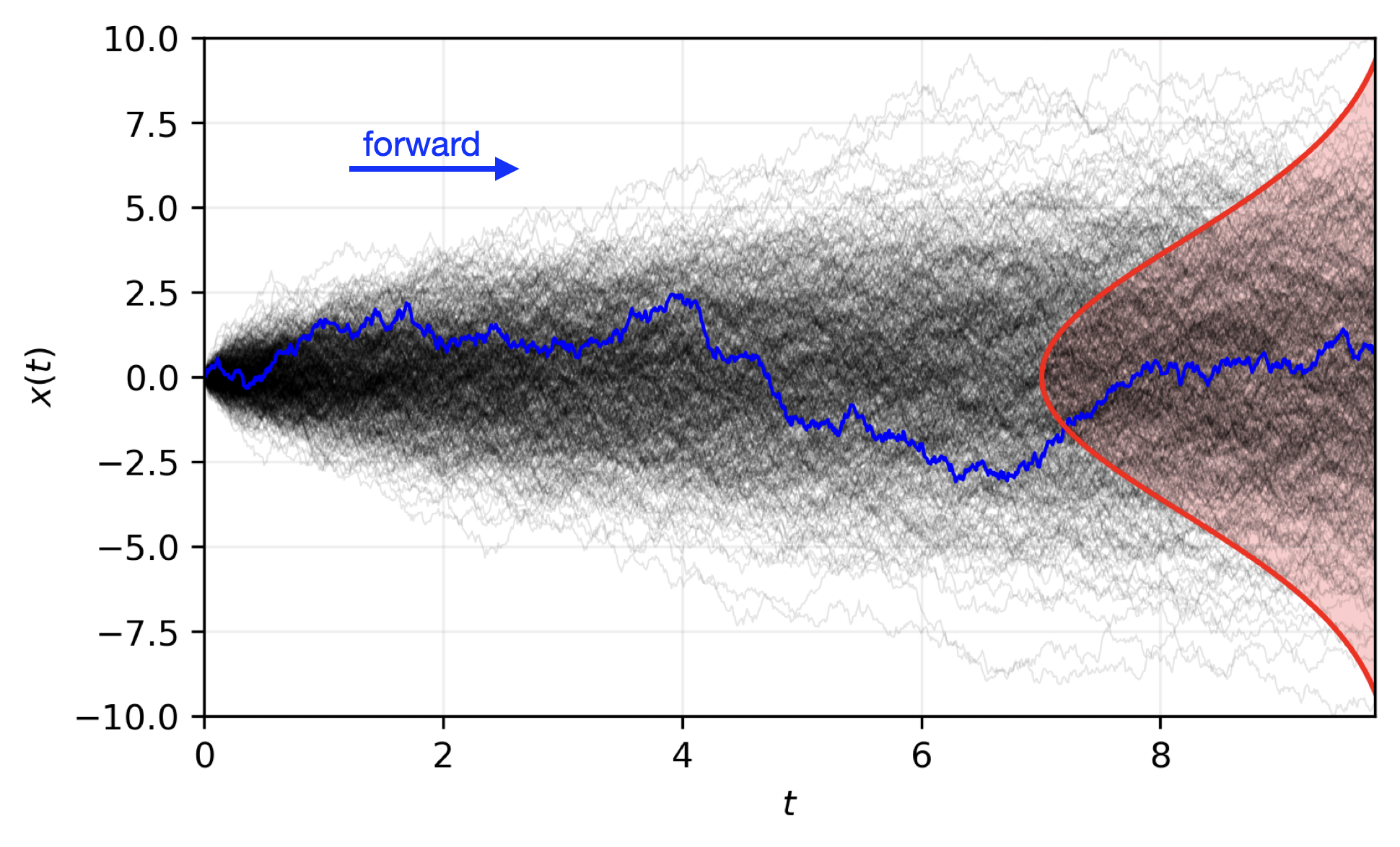Training Foundation Models on Supercomputers
Sam Foreman

@ Georgia Institute of Technology
2025-10-15
🌐 Distributed Training
🚀 Scaling: Overview
- ✅ Goal:
- Minimize: Cost (i.e. amount of time spent training)
- Maximize: Performance
📑 Note
See 🤗 Performance and Scalability for more details
🐢 Training on a Single Device
SLOW!: Model size limited by GPU memory
🕸️ Parallelism Strategies
- Data Parallelism
- Split data across workers
- Easiest to implement
- No changes to model
- Model Parallelism
- Split model across workers
- Hybrid Parallelism
- Combine data + model parallelism
- More complex to implement
- Requires changes to model
👬 Training on Multiple GPUs: Data Parallelism
▶️ Data Parallel: Forward Pass
◀️ Data Parallel: Backward Pass
🔄 Collective Communication
- Broadcast: Send data from one node to all other nodes
- Reduce: Aggregate data from all nodes to one node
- AllReduce: Aggregate data from all nodes to all nodes
- Gather: Collect data from all nodes to one node
- AllGather: Collect data from all nodes to all nodes
- Scatter: Distribute data from one node to all other nodes
Reduce
- Perform a reduction on data across ranks, send to individual
🐣 Getting Started: In Practice
- 📦 Distributed Training Frameworks:
- 🍋 saforem2 /
ezpz - 🤖 Megatron-LM
- 🤗 Accelerate
- 🔥 PyTorch
- 🍋 saforem2 /
- 🚀 DeepSpeed
- 🧠 Memory Management:
- FSDP vs. ZeRO
- Activation Checkpointing
- Mixed Precision Training
- Gradient Accumulation
- Offloading to CPU/NVMe
🔄 Keeping things in Sync
Computation stalls during communication !!
Keeping the communication to computation ratio small is important for effective scaling.
📝 Plan of Attack
🚀 Going Beyond Data Parallelism
- ✅ Useful when model fits on single GPU:
- ultimately limited by GPU memory
- model performance limited by size
- ⚠️ When model does not fit on a single GPU:
- Offloading (can only get you so far…):
- Otherwise, resort to model parallelism strategies
Going beyond Data Parallelism: ZeRO
- Depending on the
ZeROstage (1, 2, 3), we can offload:- Stage 1: optimizer states \left(P_{\mathrm{os}}\right)
- Stage 2: gradients + opt. states \left(P_{\mathrm{os}+\mathrm{g}}\right)
- Stage 3: model params + grads + opt. states \left(P_{\mathrm{os}+\mathrm{g}+\mathrm{p}}\right)
🕸️ Additional Parallelism Strategies
- Tensor (/ Model) Parallelism (
TP): - Pipeline Parallelism (
PP): - Sequence Parallelism (
SP): -
- Supports 4D Parallelism (
DP+TP+PP+SP)
- Supports 4D Parallelism (
Pipeline Parallelism (PP)
- Model is split up vertically (layer-level) across multiple GPUs
- Each GPU:
- has a portion of the full model
- processes in parallel different stages of the pipeline (on a small chunk of the batch)
- See:
Tensor Parallel (TP)
- Each tensor is split up into multiple chunks
- Each shard of the tensor resides on its designated GPU
- During processing each shard gets processed separately (and in parallel) on different GPUs
- synced at the end of the step
- See: 🤗 Model Parallelism for additional details
Tensor Parallel (TP)
- Suitable when the model is too large to fit onto a single device (CPU / GPU)
- Typically more complicated to implement than data parallel training
- This is what one may call horizontal parallelism
- Communication whenever dataflow between two subsets
-
argonne-lcf/Megatron-DeepSpeed - 🤗
huggingface/nanotron
Tensor (/ Model) Parallel Training: Example
Want to compute: y = \sum_{i} x_{i} W_{i} = x_0 * W_0 + x_1 * W_1 + x_2 * W_2
where each GPU has only its portion of the full weights as shown below
- Compute: y_{0} = x_{0} * W_{0}\rightarrow
GPU1 - Compute: y_{1} = y_{0} + x_{1} * W_{1}\rightarrow
GPU2 - Compute: y = y_{1} + x_{2} * W_{2} = \sum_{i} x_{i} W_{i} ✅
🔭 AI-for-Science
ChatGPT: explain this image
🏗️ Aurora
| Property | Value |
|---|---|
| Racks | 166 |
| Nodes | 10,624 |
| XPUs2 | 127,488 |
| CPUs | 21,248 |
| NICs | 84,992 |
| HBM | 8 PB |
| DDR5c | 10 PB |
🌌 AuroraGPT (2024–)
AuroraGPT: General purpose scientific LLM Broadly trained on a general corpora plus scientific {papers, texts, data}
- Explore pathways towards a “Scientific Assistant” model
- Build with international partners (RIKEN, BSC, others)
- Multilingual English, 日本語, French, German, Spanish
- Multimodal: images, tables, equations, proofs, time series, graphs, fields, sequences, etc
Awesome-LLM
🧪 AuroraGPT: Open Science Foundation Model
🧰 AuroraGPT: Toolbox
- Datasets and data pipelines (how do we deal with scientific data?)
- Software infrastructure and workflows (scalable, robust, extensible)
- Evaluation of state-of-the-art LLM Models (how do they perform on scientific tasks?)
🚂 Training
argonne-lcf/Megatron-DeepSpeed
Large Model Training: Any Scale, Any Accelerator
🏃♂️ Running
argonne-lcf/inference-endpoints
Inference endpoints for LLMs, hosted @ ALCF
🏋️ Challenges: In Practice
This is incredibly difficult in practice, due in part to:
- Brand new {hardware, architecture, software}
- Lack of native support in existing frameworks (though getting better!)
- General system stability
+10k Nodes \left(\times \frac{12\,\,\mathrm{XPU}}{1\,\,\mathrm{Node}}\right)\Rightarrow +100k XPUs- network performance
- file system stability (impacted by other users !)
- many unexpected difficulties occur at increasingly large scales
- Combinatorial explosion of possible configurations and experiments
- {hyperparameters, architectures, tokenizers, learning rates, …}
💾 AuroraGPT: Training
- To train a fixed model on trillions of tokens requires:
- Aggregating data from multiple different corpora
(e.g. ArXiv, Reddit, StackExchange, GitHub, Wikipedia, etc.) - Sampling each training batch according to a fixed distribution across corpora
- Building indices that map batches of tokens into these files (indexing)
The original implementation was slow:
- Designed to run serially on a single device
- Major bottleneck when debugging data pipeline at scale
- Aggregating data from multiple different corpora
🍹 AuroraGPT: Blending Data, Efficiently
📉 Loss Curve: Training AuroraGPT-7B on 2T Tokens
✨ Features
- 🕸️ Parallelism:
- {data, tensor, pipeline, sequence, …}
- ♻️ Checkpoint Converters:
- Megatron ⇄ 🤗 HF ⇄ ZeRO ⇄ Universal
- 🔀 DeepSpeed Integration:
- ZeRO Offloading
- Activation checkpointing
- AutoTP (WIP)
- ability to leverage features from DeepSpeed community
✨ Features (even more!)
- 🧗 Optimizers1:
- Support for many different optimizers:
- Distributed Shampoo, Muon, Adopt, Sophia, Lamb, GaLORE, ScheduleFree, …
- See full list
- Large batch training
- Support for many different optimizers:
- 📊 Experiment Tracking:
- Automatic experiment and metric tracking with Weights & Biases
🧬 MProt-DPO
- Finalist: SC’24 ACM Gordon Bell Prize
- One of the first protein design toolkits that integrates:
- Text, (protein/gene) sequence, structure/conformational sampling modalities to build aligned representations for protein sequence-function mapping
🧬 Scaling Results (2024)
~ 4 EFLOPS @ Aurora
38,400 XPUs
= 3200 [node] x 12 [XPU / node]
🧬 MProt-DPO: Scaling Results
🚂 Loooooooooong Sequence Lengths
- Working with Microsoft/DeepSpeed team to enable longer sequence lengths (context windows) for LLMs
- See my blog post for additional details
SEQ_LEN for both 25B and 33B models (See: Song et al. (2023))
🌎 AERIS (2025)
👀 High-Level Overview of AERIS
➕ Contributions
☔ AERIS
First billion-parameter diffusion model for weather + climate
- Operates at the pixel level (1 × 1 patch size), guided by physical priors
- Medium-range forecast skill:
- Surpasses IFS ENS, competitive with GenCast1
- Uniquely stable on seasonal scales to 90 days
🌀 SWiPe
A novel 3D (sequence-window-pipeline) parallelism strategy for training transformers across high-resolution inputs
- Enables scalable small-batch training on large supercomputers2
- 10.21 ExaFLOPS
- @ 121,000 Intel XPUs (Aurora)
⚠️ Issues with the Deterministic Approach
Transformers: - Deterministic
- Single input → single forecast
Diffusion: - Probabilistic
- Single input → ensemble of forecasts
- Captures uncertainty and variability in weather predictions
- Enables ensemble forecasting for better risk assessment
🎲 Transitioning to a Probabilistic Model
🌀 Sequence-Window-Pipeline Parallelism SWiPe
SWiPeis a novel parallelism strategy for Swin-based Transformers- Hybrid 3D Parallelism strategy, combining:
- Sequence parallelism (
SP) - Window parallelism (
WP) - Pipeline parallelism (
PP)
- Sequence parallelism (
🚀 AERIS: Scaling Results
- 10 EFLOPs (sustained) @ 120,960 GPUs
- See (Hatanpää et al. (2025)) for additional details
- arXiv:2509.13523
🌪️ Hurricane Laura
📓 References
❤️ Acknowledgements
This research used resources of the Argonne Leadership Computing Facility, which is a DOE Office of Science User Facility supported under Contract DE-AC02-06CH11357.
